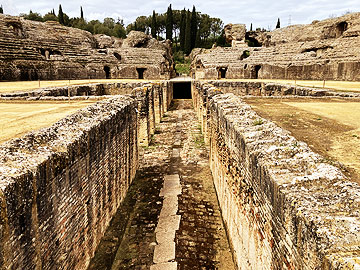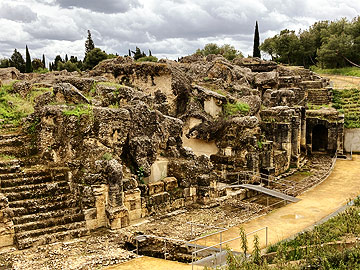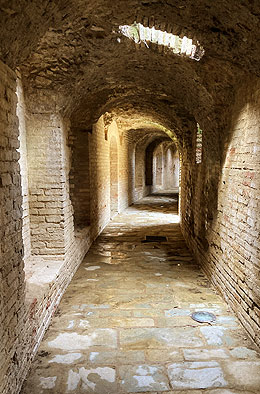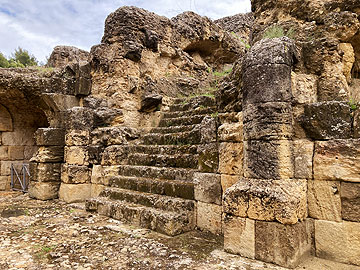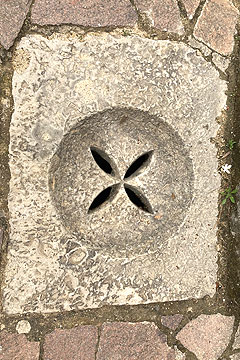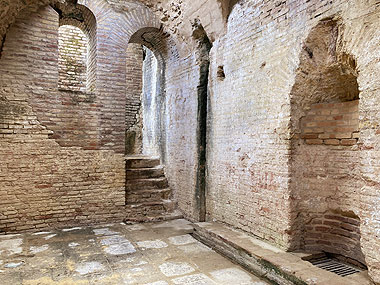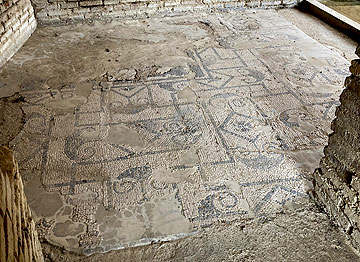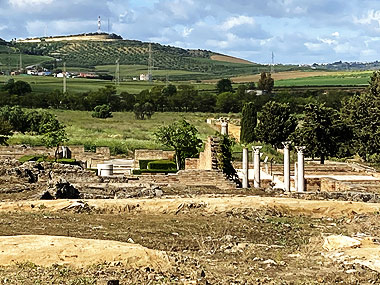

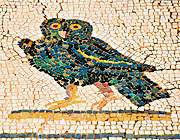
Italica was an important Roman city and the extensive ruins, with some fabulous mosaics and a huge amphitheatre, take some time to explore fully.
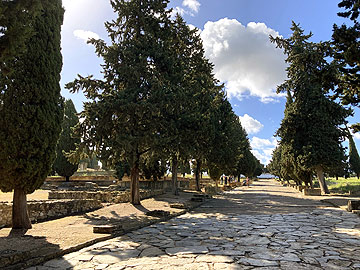
Founded in 206 BC Italica was the first permanent Roman settlement on the Iberian Peninsula, named for the country of origin of its founders - Italy.
The town grew significantly during the reigns of the Emperors Trajan (98-117 AD) and particularly Hadrian (117-138 AD) - Trajan was born here while Hadrian's family came from Italica, and he too may have been born here. The settlement acquired the status of "colony" and expanded fourfold during the second century.1
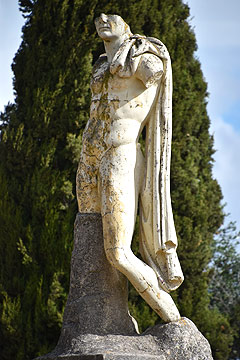
It flourished for only just over a century, however, affected by the near collapse of the Roman empire in the third century. Hadrian's expanded urban area was abandoned and was never built on in later years. This accounts for the very good state of preservation of this area.
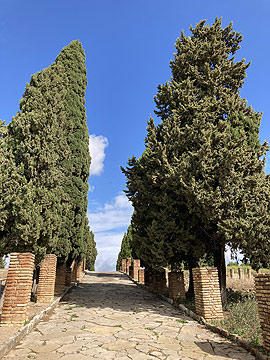
A very informative leaflet is provided with the entrance fee and there are a lot of information boards around the site.
The plan of the city is typically Roman, laid out on a rectangular grid of streets, though major streets are unusually wide at over 16m, reflecting the Hellenistic influence on the Hadrianic expansion and urbanisation of the settlement.
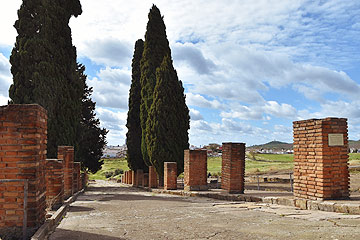
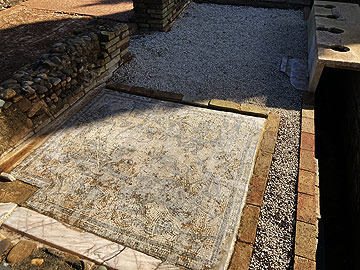
Very little remains of the huge Traianeum, dedicated to the worship of the Emperor Trajan, it would have been visible from great distances.
The Exedra is a very large complex covering 4000 sq metres. It includes a rectangular arena (palaestra) on its north side, used for sports training and exercise, and a communal latrine on the south side. The exedra itself was a large vaulted room open to the east end of the arena, used for meetings or banquets. On the north side of the arena a covered vaulted passage, below ground, called a cryptoporticus, allowed access to the exedra without having to cross the arena.
South of the exedra there was large complex of baths with the usual facilities: apodyterium - the changing room, cold water frigidarium, warm water tepidarium and hot water caldarium.
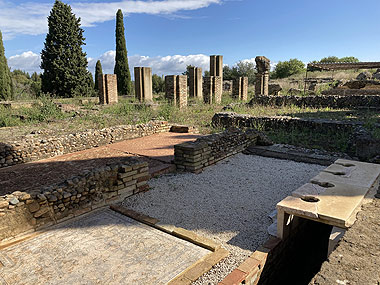
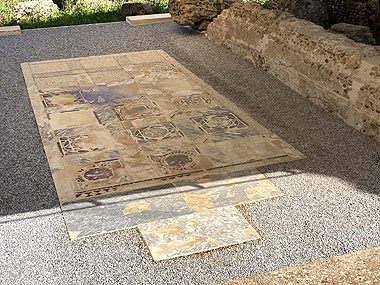
In the centre was a long peristyle courtyard with fountains and on the south side of this courtyard is a very high status floor of opus sectile. This was the most prized of floor decorations, composed of finely shaped marble arranged in geometric designs. The owner must have been very high status for this example uses many different types of marble, most of them imported
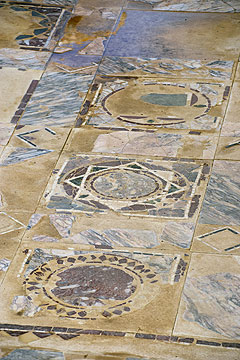
The layout of the Exedra suggests that large numbers of people would have gathered here, perhaps some kind of professional association.
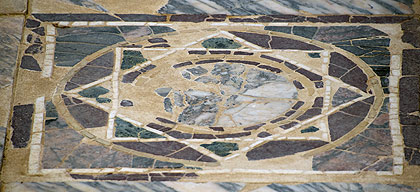
The Domus di Nettuno (House of Neptune) lies to the south of the Exedra, possibly the largest property in Italica, covering 6,000 sq metres.
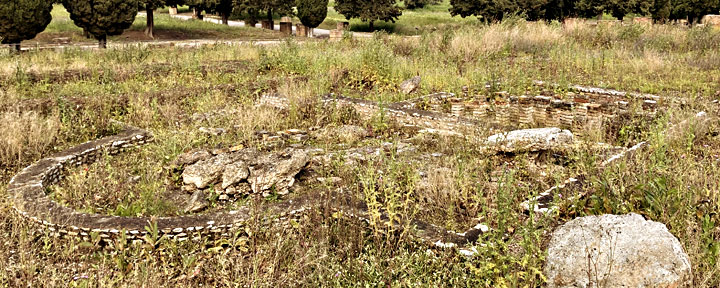
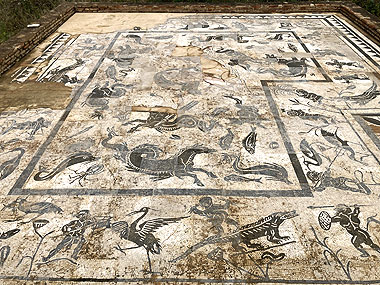
Two rooms of a bath complex have been discovered: the hypocaust heating system of two heated rooms (calderia?), and the cold room, the frigidarium, with a fine mosaic floor of Neptune and an array of sea creatures, many of them mythological.
The border of the Neptune mosaic features pygmies fighting cranes and crocodiles.
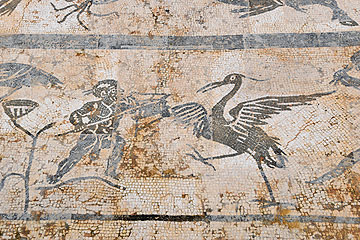
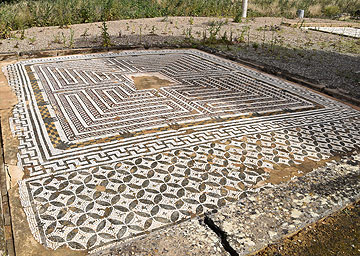
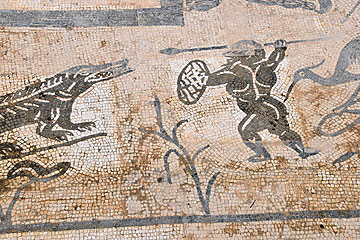
There are more rooms, this time of a residential nature, with fine mosaics. A large labyrinth mosaic would once have had a representation of Theseus at the centre of the Minotaur's labyrinth.
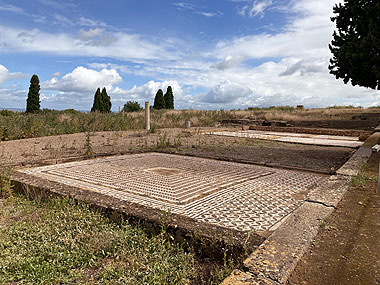
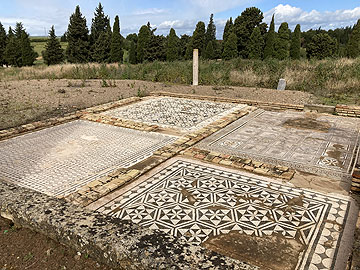
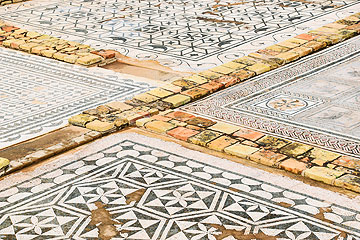
The Bacchus mosaic once had a central representation of Bacchus surrounded by dancing maenads, satyrs, centaurs and tigers.
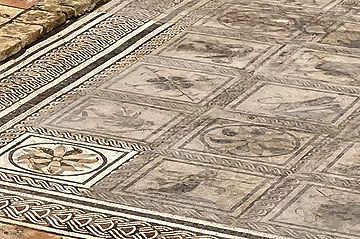
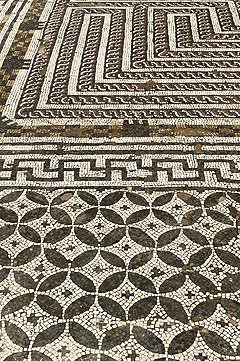
On the block south of the House of Neptune is the most famous of Italica's remains, the Casa de los Pajaros - House of the Birds, another large property around 1700 sq metres. Again a typical layout around a central courtyard with a peristyle. In the centre of the courtyard was a well supplied with water from an underground rainwater cistern.
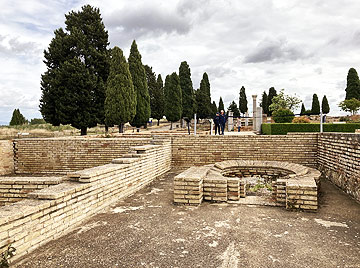
An either side of the entrance to the house, on Cardo Maximus, were retail units, tabernae, rented out by the owner, including a panaderia (bakery).
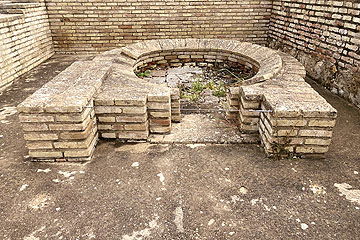
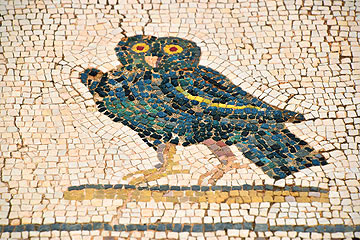
The bird mosaic which gives the house its name is very detailed and many birds can be identified including a parrot, peacock, eagle, rooster and a dove. The missing central mosaic may have represented a scene from the myth of Orpheus with musical and theatrical elements.
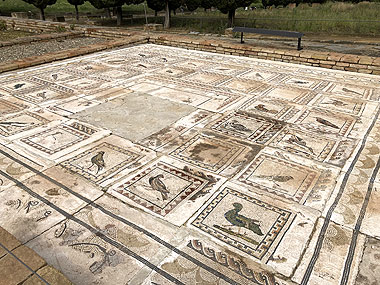
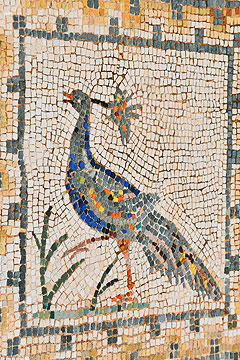
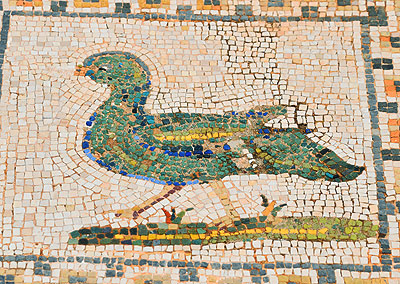
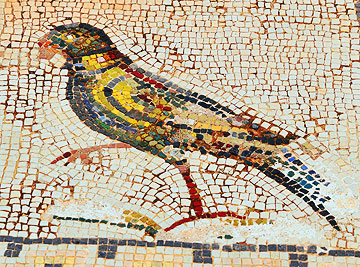
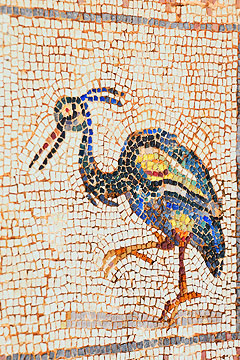
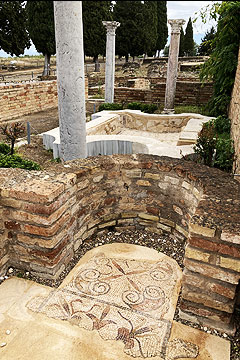
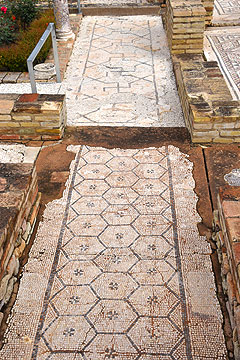
The room with the bird mosaic opens directly onto the peristyle. On the east side is a small lararium, a shrine devoted to the household gods.
Behind the shrine is a small patio with columns and a fountain, no doubt a cool spot in summer being on the north side of the house.
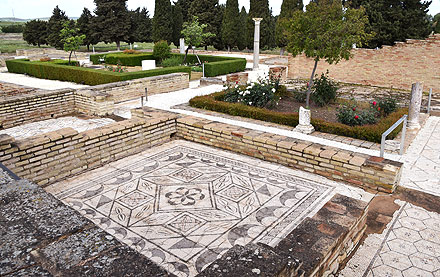
Directly opposite the entrance to the house, on the east side of the peristyle, is a large triclinium which was the main dining room. On both sides of the triclinium were the family's private apartments. This include the small patio with fountain on the north side and another small patio on the south side, also with columns, which probably once had a pool. There are, again, some fine mosaics in this area.
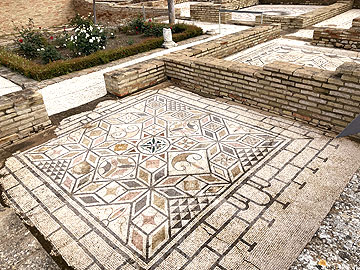
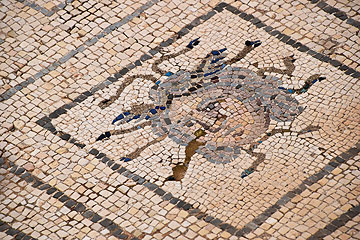
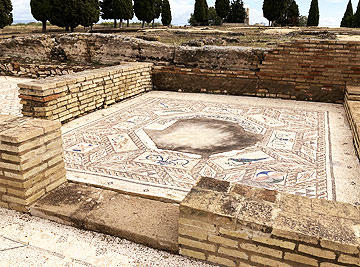
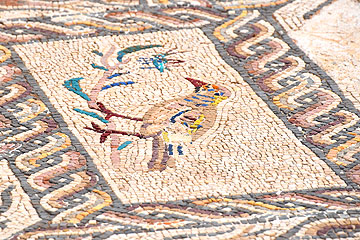
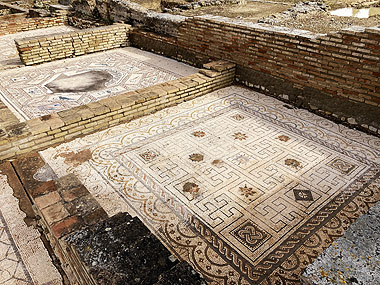
Two of the rooms in the private family apartments once featured mosaics of Tellus and Medusa associated with the fertility and protection of the family. Though the central Tellus mosaic is now missing, the Medusa mosaic is intact.
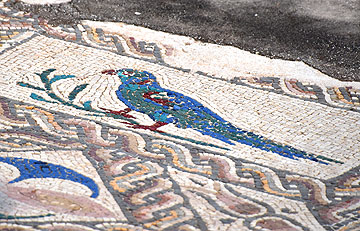
Domus del Planetario - House of the Planetarium - lies west of the House of the Birds and is named for an extremely well-preserved mosaic. It is of the same style as the other large houses here, with a peristyle courtyard, private family rooms, and commercial premises on the exterior of the ground floor. One of these was again a bakery, but with a different style of oven, set in a wall rather than a free-standing "beehive".
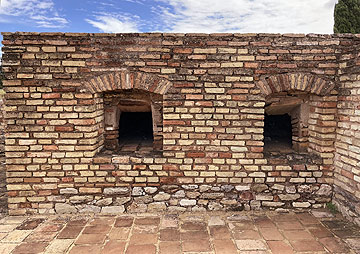
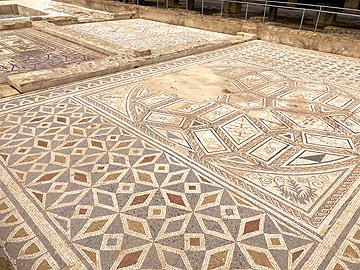
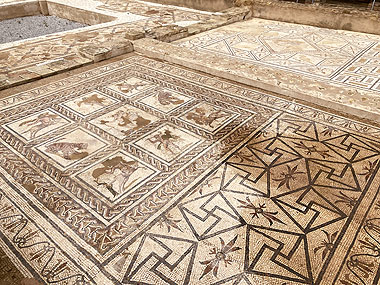
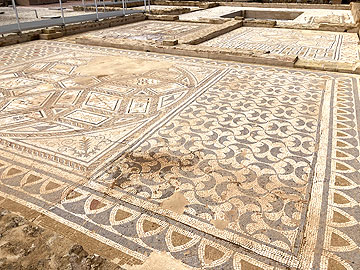
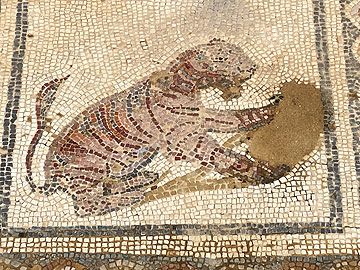
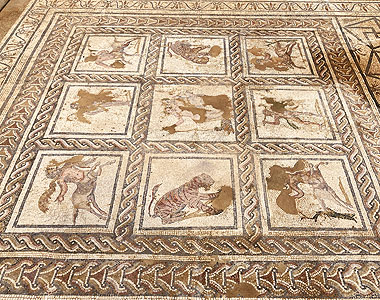
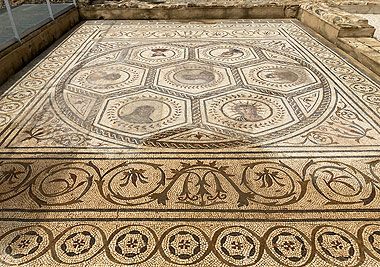
The planetarium mosaic is based on the seven days of the week, a system adopted by Constantine in 321, replacing the previous 8 day week.
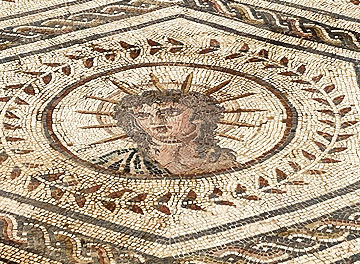
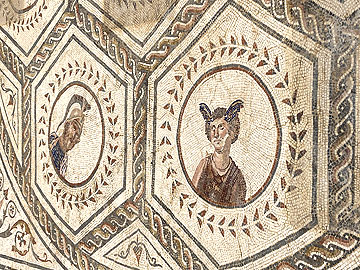
Astronomers had observed that, over the course of a year, only seven celestial objects changed their relative position, these being the sun, moon and planets Mercury, Venus, Mars, Jupiter and Saturn. The days were named after these seven bodies.
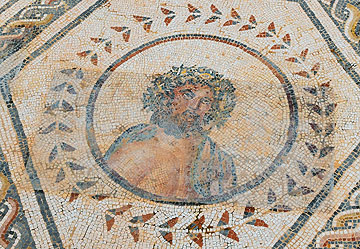
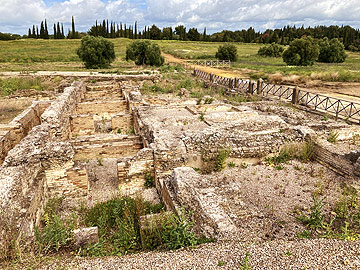
The Great Baths was the largest public building in Italica at around 32,000 sq metres. It had a very large palaestra, an area for exercise, next to the baths complex. The entrance to the baths led directly into a vestibule then to a large swimming pool. The Romans used baths not only to get clean but also to socialise, and it was very much a communal activity.
The Great Baths had the usual frigidarium (cold water), tepidarium (warm water), and caldarium (hot water) rooms and also a laconium, a room of intense dry heat. The route through the baths could vary but might start in the frigidarium or straight into the tepidarium to prepare the body for the caldarium and laconium. Then back into the refreshing frigidarium. Romans applied oils and a mild abrasive such as fine pumice to their bodies as a cleansing agent and strigils (a curved length of metal) were used to scrape sweat, dirt and oils from the body either in the caldarium or after the laconium.
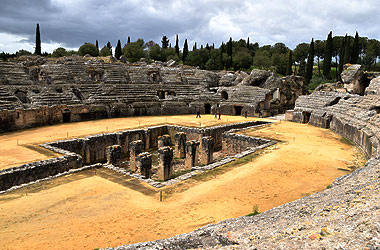
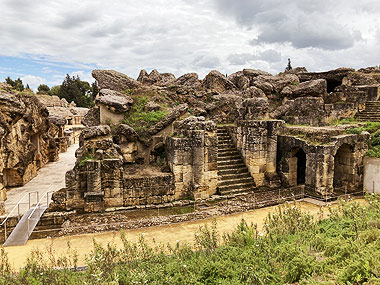
The amphitheatre at Italica was one of the largest ever built and could seat 25,000 spectators. Italica numbered only around 10,000 inhabitants so many visitors must have come to the city for the spectacles put on in the amphitheatre such as gladiatorial combat and wild animal hunts.
